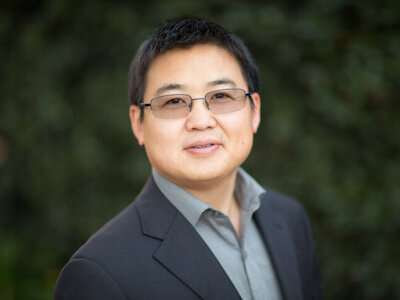by Adrian De Novato, Michigan State University
In late January, as the world watched the growing COVID-19 epidemic with increasing unease, a Michigan State University laboratory, which specializes in the use of artificial intelligence and big data to discover therapeutics for cancers, switched gears to face the coming challenge.

The Chen Lab, led by Bin Chen, assistant professor in the Department of Pediatrics and Human Development, and the Department of Pharmacology and Toxicology, put its expertise to work. They developed a computational process for identifying existing drugs that may be repurposed to fight the SARS-CoV-2 virus without needing access to the virus itself.
When a virus infects a human cell, it hijacks the reproductive capabilities to replicate and survive. In doing so, the virus interferes in the activity of the host cell’s genes. Each virus leaves a unique imprint on the cell at a certain point of infection—known scientifically as a gene expression signature—that is detectable by modern laboratory technologies.
“We wanted to find a drug that could block the gene expression change in the host cells, hoping to mitigate disease progression and alleviate symptoms,” Chen said.
Meanwhile, scientists worldwide knew almost nothing about the new virus and access to live virus samples was limited at best, he said. Based on a number of publicly-available datasets, Chen and his team surmised that other members of the coronavirus family—SARS and MERS—could approximate the gene expression signature of the new virus.
Using the lab’s existing library of FDA-approved or clinically-investigated drugs and an established drug prediction pipeline, the team examined thousands of potential drug candidates through a complex methodology of scoring, rating and ranking potential candidates against known gene expression signatures.
“Fortunately, we found a number of drugs that could be effective,” Chen said. “But we needed to do more. We needed biological validation.”
In collaboration with researchers at the University of Texas Medical Branch, Chen tested the top-rated drug candidates on kidney cells derived from an African green monkey, a common cell line used in toxicology and virology research. The cells were first treated with the drug and later infected by the new SARS-CoV-2 virus.
“We sent 10 drugs to them and it turns out that four drugs were able to prevent the virus-induced effects,” Chen said. “Unfortunately, the drugs, which are used to treat cancer, are also rather toxic. But the concept worked. Our process worked. We can now find more potential drugs to reverse the impacts of the virus and keep those less toxic drugs for further investigation.”
“I’m very appreciative of how open the scientific community has been,” Chen said. “We knew very little at the beginning, but scientists have been making their work available to the community so that we can act.”
Researchers in South Korea tested 35 FDA-approved drugs for antiviral efficacy against actual SARS-CoV-2 samples. Fourteen positive drugs overlapped with Chen Lab’s screening library and were also ranked highly by the methodology. This data also externally validated the predictive ability of Chen’s discovery process.
“We are striving to use the best science possible to help patients,” Chen said.
He intends to make their work available immediately. “We need to release this data to the public. Other laboratories across the world may be able to learn from our work,” Chen said. “They can select new compounds to investigate. There are so many drugs to screen. We alone cannot test them all.”
The study, “Reversal of Infected Host Gene Expression Identifies Repurposed Drug Candidates for COVID-19” appears in bioRxiv. Please note that this study, like many being shared during the global pandemic on preprint archives such as bioRxiv, has not undergone peer review.

Leave a Reply